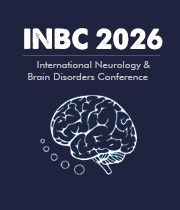Tau Proteins
Tau proteins are microtubule-binding proteins found in neurons of the human brain. They are also known as microtubule-associated proteins (MAPs) and are involved in a variety of cellular functions, including stabilization of microtubule structure, intracellular transport, regulation of gene expression and cargo sorting. They are found in the axon of most post-mitotic cells and their concentration is higher in the axons of neurons than in the rest of the cell. Tau proteins are highly conserved proteins, meaning they are present in all organisms from bacteria to humans. They are made up of both an amino-terminal and a carboxy-terminal region, each with different functions. The amino-terminal region is involved in binding to microtubules and the carboxy-terminal region is responsible for the tau proteins’ interactions with other proteins and molecules. Tau proteins help to stabilize microtubules and enable the cell to transport molecules down the length of the axon. Imbalances in tau protein levels can disrupt this process. In human brains, tau proteins form clusters called neurofibrillary tangles (NFTs). The formation of NFTs occurs during the progression of neurological diseases such as Alzheimer's disease and some forms of dementia, resulting in cell death and damage to the neuronal network. Tau proteins exist in different isoforms or forms, depending on the environment in which they are found. Under normal physiological conditions, the isoforms of tau proteins act as stabilizers of the microtubules and serve an important role in the regulation of intracellular transport. When abnormal conditions arise, such as a decrease in the intracellular supply of energy, the normal tau isoforms are altered and new hyperphosphorylated tau isoforms are generated. These altered isoforms cause the tau protein to become insoluble and lose its ability to bind to microtubules, leading to instability in the cell's structure and impaired function. The study of tau proteins is important in understanding and tackling neurodegenerative diseases like Alzheimer’s and has potential applications in therapies for other conditions. Research into tau protein inhibitors is ongoing, with the aim of finding molecules that can inhibit the accumulation of the toxic tau isoforms and thereby reduce their damaging effects on the neuronal network.

Joe Sam Robinson
Mercer University, United States
Robert B Slocum
University of Kentucky HealthCare, United States
George Diaz
Memorial Healthcare Systems, United States
Daniel Curry
Texas Children’s Hospital, United States
Zhenhuan Liu
Guangzhou University Chinese Medicine, China
Kiran Ghotra
Lake Erie College of Osteopathic Medicine, United States




Title : Atypical presentation of Juvenile myoclonic epilepsy in a 16-year-old female: A Case Report
George Diaz, Memorial Healthcare Systems, United States
Title : What we don’t know about hydrocephalus and It’s management
Daniel Curry, Texas Children’s Hospital, United States
Title : Artificial intelligence-driven DWI and FLAIR for the detection of early stroke changes: A systematic review
Shari L Guerra, The Medical City, Philippines
Title : Mapping neuroplasticity in occupational therapy: Evidence-based interventions with measurable neural outcomes
Jessica Marchant, Texas Woman's University, United States
Title : Non-pharmacologic management of orthostatic hypotension in inpatient rehabilitation: A quality improvement initiative
Laura Steakin, Rehabilitation Institute at Sinai, United States
Title : Non-pharmacologic management of orthostatic hypotension in inpatient rehabilitation: A quality improvement initiative
Mackenzie Weber, Rehabilitation Institute at Sinai, United States